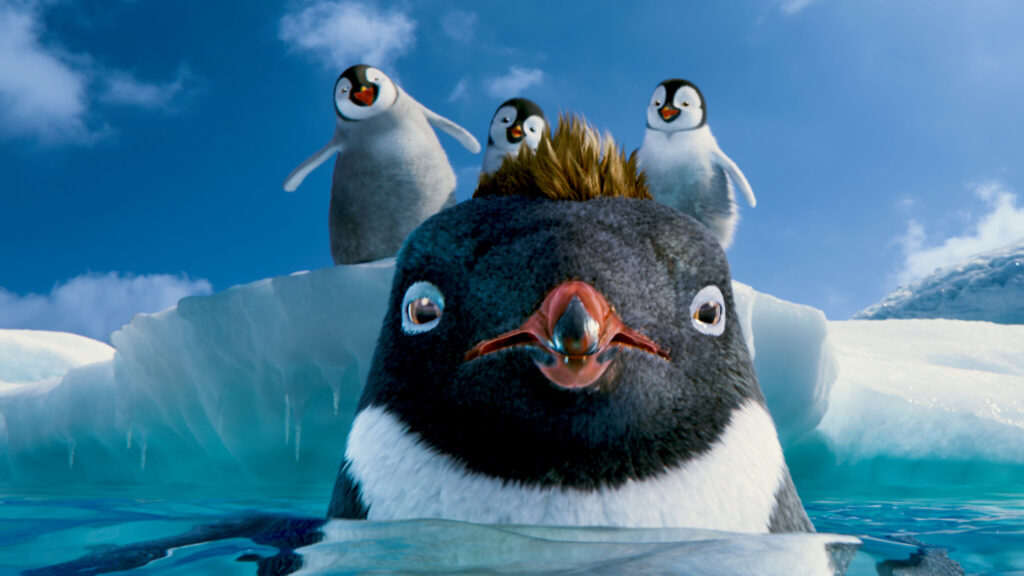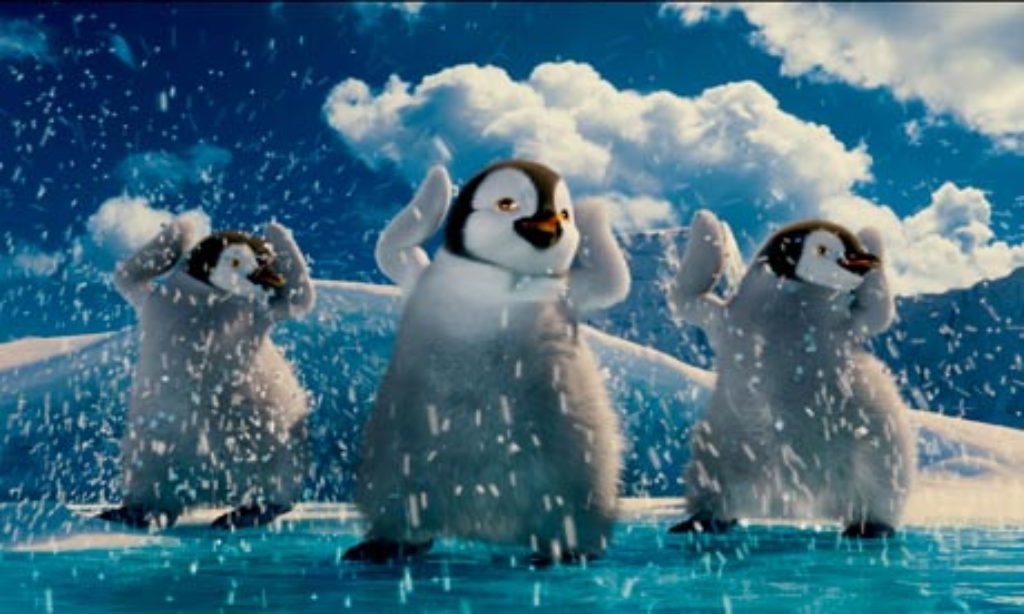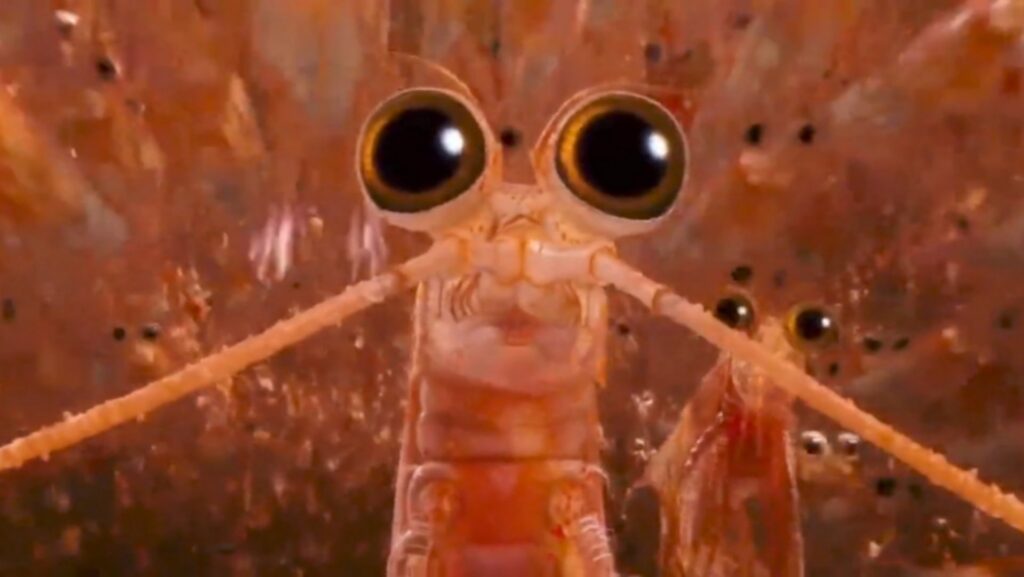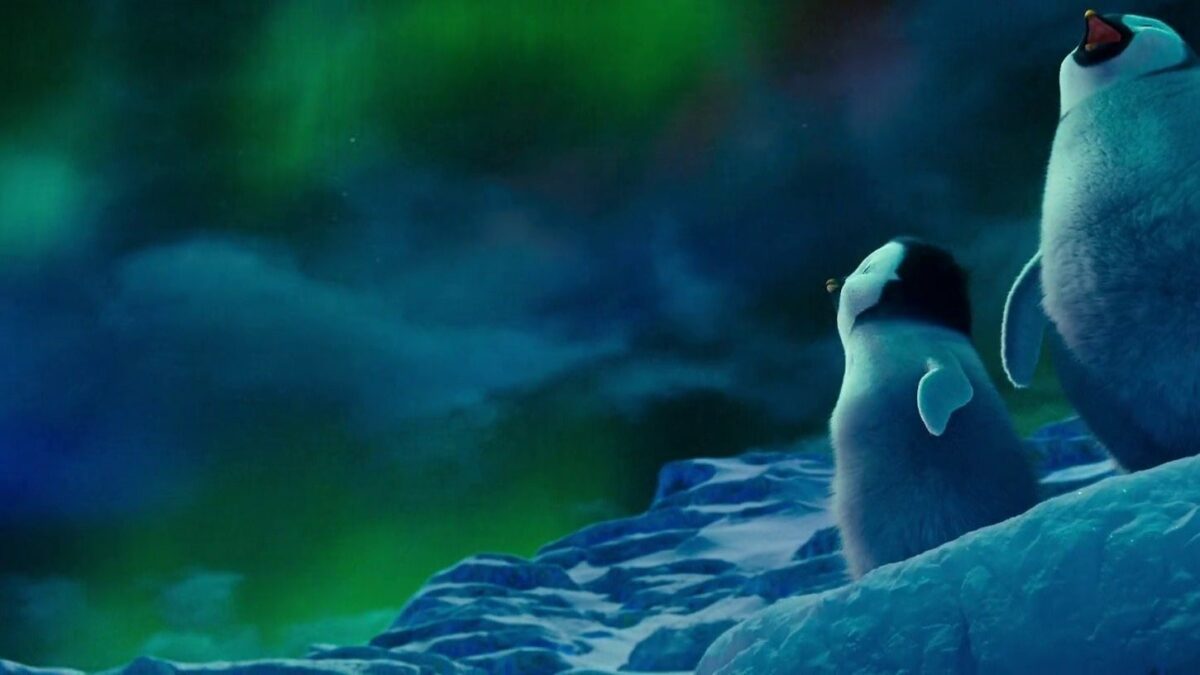The triumph of the krill
Happy Feet Two suffers from a similar ailment to The Witches of Eastwick: it’s a George Miller project that sounds so outrageously weird on paper, and it is made by a director so unquestionably a visionary, that you simply assume it must be fun to watch. And yet it really isn’t. It’s not a flaming piece of wreckage or anything, which is maybe the problem; if it had leaned into being goofy and cacophonous as its whole purpose, it might have had a little more of an aftertaste of any sort, instead of ending up as a bunch of half-baked, barely compatible ideas.
This film caps a strange, extended era for Miller where he produced and directed nothing but children’s fare. In 1992, he released the medical drama Lorenzo’s Oil, and then for more than twenty years every release bearing his name was aimed at kids. Two duologies in total: Babe (1995; producer and writer only), Babe: Pig in the City (1998), Happy Feet (2006), and now this. (Frustratingly, it is not Happy Feet 2, but Happy Feet Two. I get annoyed every time I type it.) The one exception was his hourlong 1997 documentary about Australian cinema, 40,000 Years of Dreaming, amusingly subtitled White Fellas Dreamin. Never seen it, but that’s a heck of a name.

After Happy Feet Two, Miller’s next release would finally be the one he’d been working on behind the scenes for decades: a fourth entry in his unpredictable action series Mad Max. It is safe to say that is a film of more consequence, influence, and artistic achievement than Happy Feet Two, and one I’m looking forward to writing about. But the gap between an Antarctic jukebox musical and chrome-sprayed war rigs is not as wide as it looks.
The connections to the rest of Miller’s career aren’t just biographical trivia; they make one of the most interesting components of Happy Feet Two. Like many Miller films, this one feels like a rehearsal space for techniques he’ll refine and redeploy later. Most obvious is his growing mastery of space and pace during set pieces. The action here is huge, literally glacier-sized and featuring a cast of hundreds at times, and busy with overlapping goals, yet Miller keeps our eyes gliding from beat to beat without losing momentum. It sounds silly given how different the movies are in tone and audience, but you can see Miller becoming the filmmaker who would make Mad Max: Fury Road right here, stomping around with tap-dancing penguins.
The film follows Erik (Ava Acres), the non-dancing son of Mumble (Elijah Wood) and Gloria (Alecia Moore; i.e. P!nk, replacing Brittany Murphy, RIP) from Happy Feet the first. Erik bolts from Emperor-Land with friends Bo (Meibh Campbell) and Atticus (Benjamin Flores Jr.) and latches onto the charisma of the Mighty Sven (Hank Azaria), a self-styled flying penguin, whom most viewers will immediately recognize as actually a puffin. Sven pals around with ex-guru Lovelace (Robin Williams in one of his last performances). Back home, a wandering iceberg sideswipes the colony into a vast icy cul-de-sac, forcing Mumble and Erik to shuttle fish for survival, recruit the aid of Bryan the Beach Master (Richard Carter), an elephant seal, and hold the community together while they wait and search for a miracle.

You might recognize parts of this as a mirror image of the first Happy Feet. For example, the protagonist: Last time, dancing was deviant and one little hoofer had to argue for self-expression; now the culture has pivoted and the one kid who won’t dance feels out of step. On paper, that’s a cute inversion ripe with metaphor. In practice, it mostly plays like second verse, same as the first: a child doesn’t fit in, runs away, meets an offbeat mentor, and returns with new conviction. I know it’s not fair competition, but I compare that to Toy Story 2, which also mirrors its original, but makes it meaningful by expanding its world and complicating its ideas. Happy Feet Two doesn’t get that far; this sequel flips and remixes the premise but rarely deepens it.
The story contains a theme that Miller has tugged at throughout his filmography, especially in his family films: the danger and power of persuasive voices in altering the sentiment and behavior of the masses. Azaria’s Sven is inspiration and charlatan in equal measure, selling simple overconfidence as the answer to complex problems without being sure whether he believes in the mojo himself. Lovelace, Mumble, and Noah the Elder (Hugo Weaving) all comment on topics of authority and conformity across the two Happy Feetses. The movie keeps staging mini-referendums on who gets to lead and why: the glittering appeal of transformative paradigm shifts versus the unglamorous grind of communal labor in well-known patterns; why the former can be illusory and the latter can be oppressive, and thus a balance of both is needed. Even the mass dances offer a story in motion that you might even call kinetic political language — choreography as expression of consensus and solidarity that shakes the world; literally, in the case of Happy Feet Two.
Musically, this a glossier, more engineered spin on the first film’s mix-tape exuberance. John Powell’s score still does the heavy lifting, pulsing beneath medleys that stitch together pop standards (an “Under Pressure”/“Rhythm Nation” mash is fun), with some original anthems like “Bridge of Light”, carried by P!nk’s strong vocals. “Tightrope,” a cover of the Janelle Monae banger, is a highlight. Powell’s work here, though more arrangement than composition, is a preview for his underappreciated collection of number for The Lorax a year later. (“Thneedville” obliterates everything here.)

I’ve yet to mention the strangest and most fascinating thread in the movie: the krill. Will (Brad Pitt) and Bill (Matt Damon) appear as microscopic organisms experiencing an entirely parallel underwater adventure to the penguins, confronting their own perception of the world, which sometimes mirrors the penguins’ challenges and sometimes becomes more existential. Will and Bill peel away from their swarm to see if there’s more to life than floating with the masses and getting eaten, and tumble into a seafaring two-hander about evolution, purpose, and friendship that could almost be its own short film.
It’s a wacky, provocative subplot for a half-dozen reasons. Two of the biggest movie stars on the planet voice the tiniest creatures in the sea. Their actions have no bearing on the main plot, which adds a dark undercurrent to their pondering. For the purposes of the penguins we’ve followed since the start of last movie, their entire existence is meaningless. In a penguin duology filled with bizarre images, metaphors, and tone shifts, it’s the only one I’ve actually taken away from the series: the daunting crush of being a krill battling a glacier, where nothing you do matters, and yet you still must find meaning for the struggle. Pitt and Damon’s banter cuts darker and deeper than most anything you find in other kids’ films (glory year Pixar exempted, of course). If I had to guess, I bet it reflects Miller’s own self-doubts and unease about his place in Hollywood and the world at large, a tension always just barely below the surface of his films. The krill’s quest is the most memorable, and honestly best, story thread in Happy Feet Two, precisely because it’s so untethered to everything else going on.

Although Happy Feet Two is more polished in its animation and more refined in its virtual camera moves and set-piece design, it lacks the surreal sprawl of the original and the mixed-media texture of Happy Feet’s second half. The strange confluence of ideas — part tired retread of dancing penguin shenanigans, part goofy swerve of krill existentialism — doesn’t add up to much of a total product, despite Miller’s attempts to Frankenstein it together. It’s a fun movie to talk about and strange in a vacuum, but the whole is less than the sum of its parts.
And yet Happy Feet Two goes down smooth enough. It never feels broken or wasteful, just unnecessary. What it does feel like, perhaps, is necessary warm-up for Miller before making his grand opus. Fury Road would trade animation for hyper-real stunt work, glaciers for desert roads, but carry over the best parts of the digital polish and oomph on display here, expanding “move the crowd with motion” into a two-hour symphony of velocity and action cause-and-effect. On the flip side, I don’t recall that one having any krill pondering their place in the universe.
Is It Good?
Nearly Good (4/8)
Dan is the founder and head critic of The Goods. Follow Dan on Letterboxd. Join the Discord for updates and discussion.


2 replies on “Happy Feet Two (2011)”
You kinda sold me on this with the krill, you know. (I’d actually kinda forgotten these two movies existed, honestly.)
Well, like I said, I think it sounds more interesting than it actually is, but, yeah, it’s pretty weird and kinda cool!
Miller’s career is so weird and has so many curveballs, like almost every movie he’s made is so different from what I would have guessed his next film would be based on his career leading up to that release, that it’s easy to lose track of some of the odds and ends.